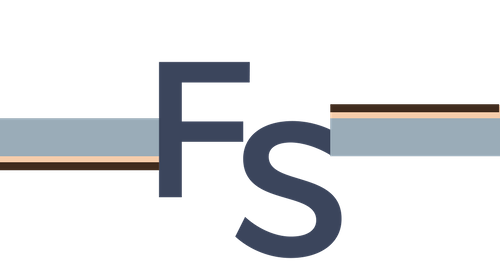Idea In Brief: The best way to maintain focus, promote deep thinking and achieve meeting goals is to have absolute clarity on the One Thing you want to accomplish. Require this One Thing in each meeting invitation title to improve the outcome and experience of each meeting.
(4 Minute Read)
Google how to make meetings more effective, and you can count on “have an agenda and stick to it” at the top of every recommendation listicle. Sounds like solid advice, but we know it’s not that simple.
Agendas are not enough.
For the typical meeting we encounter daily, I’d like to share an approach that will serve you far better than any agenda would. In my Meeting for Impact training, I apply Gary Keller’s The ONE Thing concept to meeting management, and I think you’re gonna love it!
What IS The One Thing?
In this context, the One Thing is the single most essential goal you require from this meeting. It’s the primary purpose of the meeting stated in terms of outcomes.
Here are a few One Thing meeting title examples:
- Plan the _______.
- Make decision to _______________.
- Determine/approve _____________.
- Evaluate/review ____________ for decision.
- Brainstorm/generate________ ideas so that we can __________.
Notice I didn’t include “discuss _______?” Robust discussions are great, but only when they create real decisions or actions that propel the team toward the goal. Decide what you want to do as a result of the discussion, and that becomes the One Thing for your meeting.
What if you want to gather insights? Have you ever been in a focus group? It’s not the best way to gather candid insights. After many years as a consultant, I can without equivocation say you are better off gaining insights in a 1:1 format.
What Does The One Thing Do for You?
Making the meeting’s One Thing the focus helps you achieve meeting goals by creating absolute clarity about the purpose, and allowing time to deep-dive into issues resulting in higher quality outcomes. This approach helps you:

CLARITY

ENGAGEMENT
- Planning. Decide who should attend the meeting. For example, if you are meeting to decide, you can plan for the decision makers that must be in attendance. Likewise, you can make sure you have the information necessary.
- Priming. Understanding the goal grants attendees a chance to prepare and think about the issues in advance.
- Focus. With absolute clarity on the goals, you can focus the team’s attention on the One Thing they must do. It also allows them to spend enough time to deep dive on the One Thing instead of being rushed through a list of agenda items.
- Progress. Focusing on one key issue gives you a better shot at true progress and momentum that are crucial to the real and perceived value of the meeting.
Include the One Thing on the Meeting Invitation
Every meeting invitation should have the One Thing included in the title or at a minimum visible in the Notes Section of the meeting invitation.
Be very specific about the goal. For example, instead of a meeting invitation that says “Customer X Meeting,” you might say “Decide Best Growth Strategy for Customer X.”

So what about recurring meetings? Even recurring meeting titles are best updated to reflect the priority of that upcoming meeting. (Check out my post on Status Meetings). Any gathering is most effective when deciding, planning, brainstorming or evaluating. Convey that in the title. For example:
- “Production Meeting” becomes “Decide Scheduling Priority for Week of X/20” or
- “Product Update” becomes “Approve Product Prototype for Testing Product X”
Do You Need an Agenda?
My recommendation is you don’t need an agenda for meetings under an hour. You only need the One Thing you are trying to do clearly defined. Frankly, trying to decide, approve, evaluate or brainstorm more than one thing in less than an hour typically means you are doing too much and ultimately, not doing your best work. How can you make extraordinary progress, deep-dive, and have every voice heard if you are rushing to get through the agenda?
It took me too long to understand this, but the purpose of a meeting must never be to power through the agenda. An agenda is a tool, not the goal. The purpose of a meeting is to do the best work possible to advance the organization’s most important goals.
If you feel you still need an agenda, that’s fine. Just make sure that The One Thing is at the top of it.
For meetings over an hour, I do recommend an agenda. However, take off 1/2 of the things you want to accomplish before you finalize it. Allowing time to dive more deeply into the thorny issues that challenge the organization will only result in better performance.

Idea into Action
As Meeting Leader: Look at the meetings you have lined up for the coming week. What’s the One Thing you want to achieve in each of those meetings? Change the title of the meeting to reflect that goal.
As a Meeting Participant: For your upcoming meetings, do you know the One Thing for each meeting? If not, ask the organizer to clarify, and verify that your attendance is essential and be better prepared.
As a Team: Don’t set up a meeting without having the One Thing in the meeting title and don’t accept a meeting that doesn’t include it without first getting clarity on the primary goal.
You’re spending at least 30% of your workweek in meetings, so why not make sure they are focused, intentional and result in actual work getting done?
Define the One Thing, pare down the agenda (or throw it out altogether), and achieve meeting goals for more significant impact on the organization and a richer experience for everyone.
Please share your thoughts with me on this, and if you’ve found this information helpful, you can help me get the word out by using the links provided and sharing it with a colleague. Thanks!
Work well,


